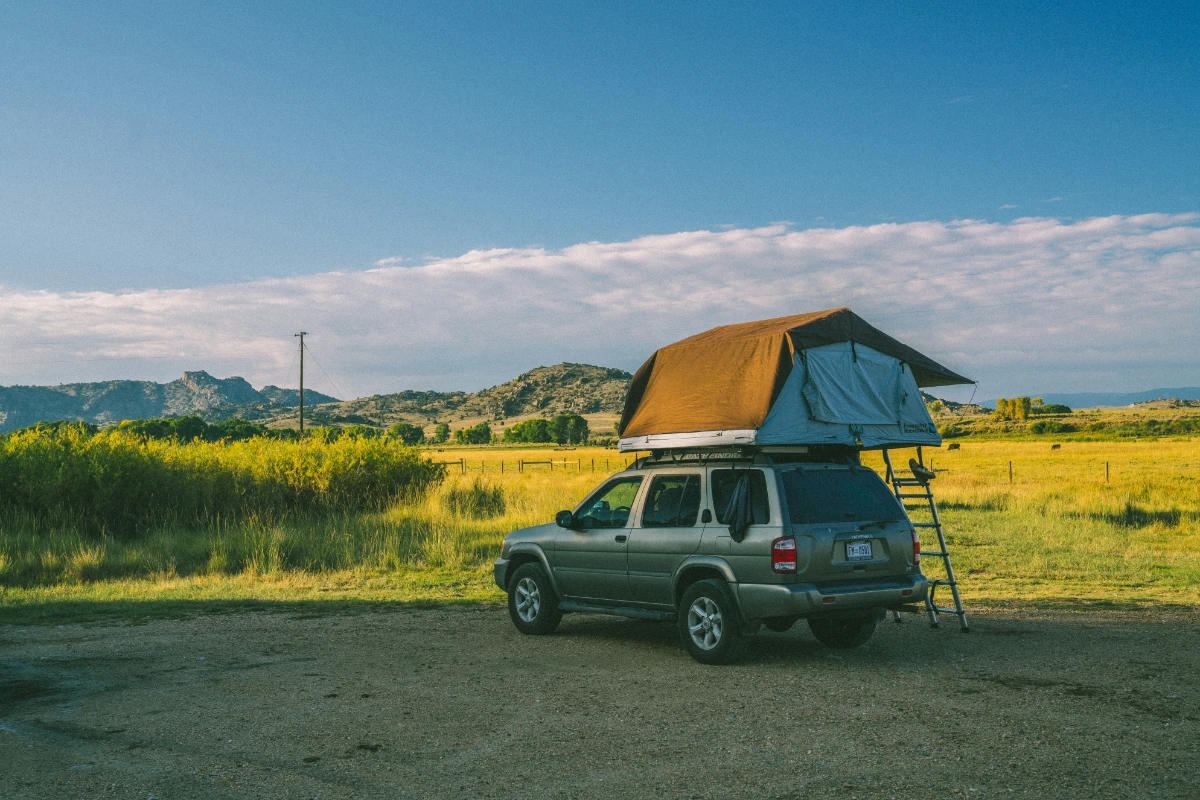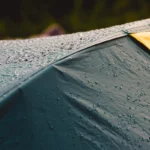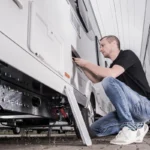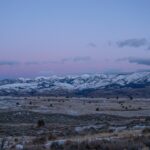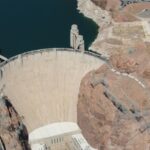Overlanding is a type of adventure travel that involves self-reliant, long-distance travel to remote destinations, typically by off-road vehicles. It is a growing trend among outdoor enthusiasts who seek to explore the world in a more immersive and adventurous way. Overlanding allows travelers to experience the thrill of off-roading, the freedom of camping in the wilderness, and the opportunity to discover hidden gems that are off the beaten path.
One of the reasons why overlanding is becoming increasingly popular is because it offers a unique and authentic travel experience. Unlike traditional forms of travel where tourists are confined to popular tourist destinations and crowded attractions, overlanding allows travelers to venture into remote areas and experience the true essence of a place. It provides an opportunity to connect with nature, learn about different cultures, and challenge oneself physically and mentally.
Another benefit of overlanding is the freedom and flexibility it offers. With overlanding, travelers have the freedom to choose their own route, set their own pace, and make spontaneous detours along the way. There are no strict itineraries or schedules to follow, allowing for a more relaxed and stress-free travel experience. Overlanding also allows travelers to escape the crowds and enjoy solitude in nature, away from the hustle and bustle of city life.
Choosing the Right Vehicle for Overlanding
When it comes to overlanding, choosing the right vehicle is crucial. The vehicle you choose will determine your comfort, safety, and ability to navigate through various terrains. There are several types of vehicles that are suitable for overlanding, including SUVs, trucks, and specialized off-road vehicles like Jeeps or Land Rovers.
When choosing a vehicle for overlanding, there are several factors to consider. First and foremost, you need to consider the terrain you will be traveling on. If you plan on tackling rough off-road trails or crossing rivers and deserts, you will need a vehicle with good ground clearance, four-wheel drive, and sturdy suspension. You should also consider the size of the vehicle and its storage capacity, as you will need enough space to carry all your gear and supplies.
Some popular overlanding vehicles include the Toyota Land Cruiser, Jeep Wrangler, Ford F-150, and Land Rover Defender. These vehicles are known for their durability, off-road capabilities, and reliability. It is important to do thorough research and test drive different vehicles before making a decision, as each vehicle has its own strengths and weaknesses.
Essential Camping Gear for Overlanding
Camping gear is an essential part of overlanding, as it allows travelers to set up camp wherever they choose and enjoy a comfortable night’s sleep in the wilderness. There are several camping gear options that are suitable for overlanding, depending on your preferences and the type of terrain you will be camping on.
When it comes to tents, there are several options to choose from. Rooftop tents are a popular choice among overlanders, as they provide a comfortable sleeping space that is elevated off the ground. They are easy to set up and pack away, and offer protection from insects and wildlife. Another option is a ground tent, which is more traditional and offers more space for multiple people or gear.
Sleeping bags and sleeping pads are also essential for a good night’s sleep while overlanding. Sleeping bags should be chosen based on the temperature rating and insulation type, depending on the climate you will be camping in. Sleeping pads provide cushioning and insulation from the cold ground, ensuring a comfortable sleep.
Camp chairs and tables are also important for creating a comfortable campsite. Camp chairs provide a place to relax and unwind after a long day of driving or hiking, while camp tables provide a surface for cooking or eating meals. Portable toilets and showers are also essential for maintaining hygiene while overlanding in remote areas.
Navigation Tools for Overlanding
| Navigation Tool | Description | Pros | Cons |
|---|---|---|---|
| GPS | A device that uses satellite signals to determine location and provide directions. | Accurate, can work offline, can provide real-time traffic updates. | May require subscription, can be expensive, may not work in remote areas. |
| Compass | A tool that uses the earth’s magnetic field to determine direction. | Does not require batteries or signal, can work in remote areas. | May require map reading skills, can be affected by nearby metal objects. |
| Map | A paper or digital representation of an area. | Does not require batteries or signal, can provide a big picture view of an area. | May require map reading skills, can be outdated or inaccurate. |
| Smartphone | A mobile device that can provide GPS navigation and maps. | Convenient, can work offline, can provide real-time traffic updates. | May require subscription, can be expensive, may not work in remote areas. |
Navigation tools are crucial for overlanding, as they allow travelers to navigate through unfamiliar terrain and find their way to their desired destinations. There are several navigation tools that are commonly used by overlanders, including GPS devices, maps and compasses, and navigation apps.
GPS devices are a popular choice among overlanders, as they provide accurate and real-time navigation information. They can be mounted on the dashboard or windshield of the vehicle, and provide turn-by-turn directions to your destination. GPS devices also have built-in maps and points of interest, making it easy to find campsites, gas stations, and other amenities along the way.
Maps and compasses are also important backup navigation tools for overlanders. They provide a visual representation of the terrain and can help you navigate in case your GPS device fails or loses signal. It is important to have both physical maps and digital maps stored on your phone or tablet, as well as a compass to determine your direction.
Navigation apps are another useful tool for overlanders. There are several apps available that provide detailed maps, offline navigation, and points of interest. These apps can be downloaded onto your phone or tablet, allowing you to navigate even in areas with no cell service.
Communication Devices for Overlanding
Communication devices are essential for overlanding, as they allow travelers to stay connected with their travel companions and emergency services in case of an emergency. There are several communication devices that are commonly used by overlanders, including two-way radios, satellite phones, and emergency beacons.
Two-way radios are a popular choice among overlanders, as they provide reliable communication in remote areas where cell service is limited or non-existent. They allow travelers to communicate with each other within a certain range, making it easy to stay in touch while on the road or exploring different areas.
Satellite phones are another communication option for overlanders. Unlike regular cell phones, satellite phones use satellites to make calls and send messages, allowing for communication in even the most remote areas. Satellite phones are more expensive than two-way radios, but they provide a reliable and secure means of communication.
Emergency beacons are essential for overlanders, as they can be used to call for help in case of an emergency. These devices use satellite technology to transmit a distress signal to emergency services, allowing for quick and efficient rescue operations. Emergency beacons should be registered with the appropriate authorities and should be carried at all times while overlanding.
Power and Lighting Equipment for Overlanding
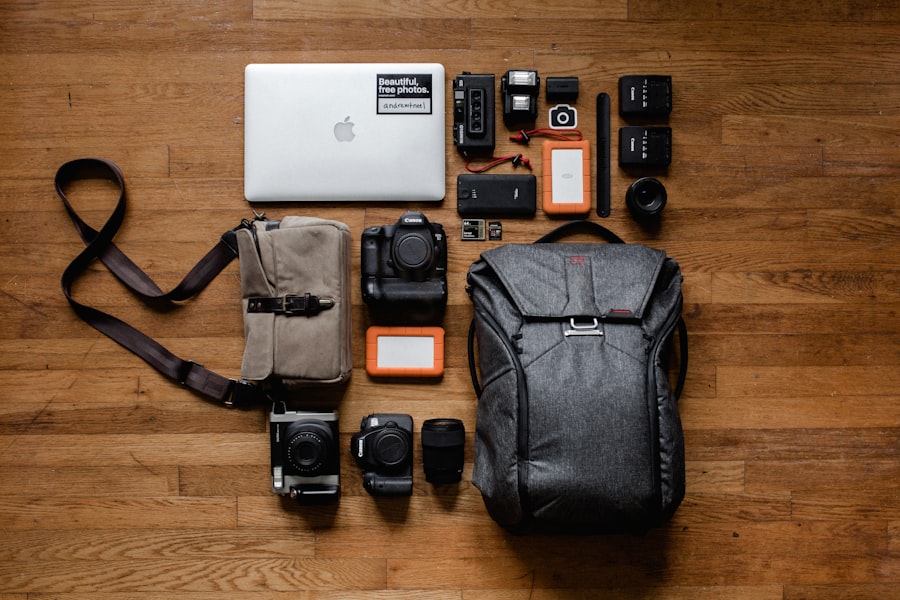
Power and lighting equipment plays a crucial role in overlanding, enabling travelers to charge their electronic devices, power their camping gear, and illuminate their surroundings at night. Overlanders commonly use several power and lighting options, such as portable power banks, solar panels, and LED lights.
Portable power banks offer a convenient method to charge electronic devices on the road. You can charge them before your trip to ensure a reliable power source for charging phones, tablets, cameras, and other small electronic devices. Available in various sizes and capacities, it’s important to select a portable power bank that meets your needs.
Solar panels represent another favored choice among overlanders, offering a renewable power source to charge batteries or power camping equipment. You can mount solar panels on your vehicle’s roof or set them up at your campsite, enabling you to harness the sun’s power to fulfill your energy requirements.
LED lights, crucial for night-time illumination during overlanding, are energy-efficient, durable, and emit bright, clear light. Mounting LED lights on your vehicle’s roof or setting them up around your campsite provides substantial lighting for cooking, reading, and other activities.
Cooking and Food Prep Gear for Overlanding
Cooking and food prep gear is essential for overlanding, as it allows travelers to prepare meals and enjoy delicious food while on the road. There are several cooking and food prep options that are suitable for overlanding, depending on your preferences and the type of meals you plan to prepare.
Portable stoves and grills are a popular choice among overlanders, as they provide a convenient and efficient way to cook meals. There are several types of portable stoves and grills available, including propane stoves, butane stoves, and charcoal grills. It is important to choose a stove or grill that is compact, lightweight, and easy to use.
Cookware and utensils are also essential for overlanding. It is important to choose cookware that is durable, lightweight, and easy to clean. Stainless steel or cast iron cookware is a good choice for overlanding, as it can withstand high heat and is resistant to scratches and dents. Utensils should be compact and easy to pack, and should include essentials like knives, forks, spoons, and cooking utensils.
Coolers and refrigerators are important for keeping food and drinks fresh while overlanding. There are several options available, including traditional coolers that use ice packs or ice cubes, as well as portable refrigerators that can be powered by your vehicle’s battery or a portable power source. It is important to choose a cooler or refrigerator that has sufficient capacity to store all your food and drinks.
Clothing and Personal Gear for Overlanding
Choosing the right clothing and personal gear is essential for overlanding, as it allows travelers to stay comfortable, protected, and prepared for various weather conditions. When it comes to clothing, it is important to choose items that are suitable for the climate you will be traveling in, as well as versatile enough to be worn in different situations.
Clothing suitable for overlanding should be lightweight, breathable, and quick-drying. It should also provide protection from the sun, insects, and other elements. It is important to pack a mix of short-sleeve and long-sleeve shirts, as well as pants and shorts that can be layered depending on the weather. It is also important to pack a waterproof jacket or rain poncho, as well as a hat and sunglasses for sun protection.
Footwear is another important consideration for overlanding. It is important to choose footwear that is comfortable, durable, and suitable for the terrain you will be traveling on. Hiking boots or trail shoes are a good choice for overlanding, as they provide ankle support and traction on uneven surfaces. It is also important to pack a pair of sandals or flip-flops for campsite use.
Personal hygiene items are also essential for overlanding. It is important to pack items like toothbrushes, toothpaste, soap, shampoo, and toilet paper. It is also a good idea to pack a small towel or microfiber towel for drying off after swimming or showering.
Recovery and Safety Equipment for Overlanding
Recovery and safety equipment is essential for overlanding, as it allows travelers to handle unexpected situations and ensure their safety while on the road. There are several recovery and safety equipment options that are commonly used by overlanders, including winches and recovery straps, first aid kits, and fire extinguishers.
Winches and recovery straps are essential for recovering a stuck vehicle while overlanding. Winches are mechanical devices that use a cable or rope to pull a vehicle out of a difficult situation, such as deep mud or sand. Recovery straps are strong nylon straps that can be attached to the stuck vehicle and used to pull it out using another vehicle or anchor point.
First aid kits are essential for overlanders, as they allow travelers to treat minor injuries and provide basic medical care in case of an emergency. First aid kits should include items like bandages, antiseptic wipes, pain relievers, and other essentials. It is important to choose a first aid kit that is comprehensive and suitable for the type of activities you will be engaging in.
Fire extinguishers are important for overlanders, as they can be used to quickly extinguish small fires and prevent them from spreading. It is important to choose a fire extinguisher that is suitable for use on different types of fires, such as those caused by flammable liquids or electrical equipment. Fire extinguishers should be easily accessible and regularly inspected to ensure they are in good working condition.
Top Picks for Overlanding Gear and Accessories
There are several gear and accessories that are highly recommended for overlanding, based on their durability, functionality, and positive reviews from overlanders. Some popular gear and accessories include:
– Roof racks and storage systems: These allow travelers to maximize their storage space and carry additional gear on the roof of their vehicle.
– Portable showers: These provide a convenient way to stay clean and fresh while overlanding, especially in remote areas with no access to showers or running water.
– Portable toilets: These are essential for maintaining hygiene while overlanding in areas with no access to public restrooms.
– Awning or shade systems: These provide a shaded area for cooking, eating, or relaxing at your campsite.
– Recovery boards: These are used to provide traction when a vehicle gets stuck in mud, sand, or snow.
– Portable air compressors: These allow travelers to inflate or deflate their tires as needed, depending on the terrain they are traveling on.
– Portable water filters: These allow travelers to purify water from natural sources like rivers or lakes, ensuring a safe and clean water supply.
– Portable grills or cookers: These provide a convenient way to cook meals while on the road or at your campsite.
– Portable refrigerators or coolers: These keep food and drinks fresh and cool, even in hot weather.
– Portable power banks or solar panels: These provide a source of power for charging electronic devices or powering camping gear.
When choosing gear and accessories for overlanding, it is important to read reviews, compare prices, and consider your specific needs and preferences. It is also a good idea to seek recommendations from experienced overlanders or join online forums and communities to get advice from fellow travelers.
Having the right gear and equipment is essential for a successful and enjoyable overlanding adventure. Whether it’s choosing the right vehicle, selecting the right camping gear, or equipping yourself with the necessary navigation tools and communication devices, having the right gear can make all the difference in your overlanding experience.
Overlanding offers a unique and immersive way to explore the world, allowing travelers to venture into remote areas and experience the true essence of a place. It provides an opportunity to connect with nature, challenge oneself physically and mentally, and discover hidden gems that are off the beaten path. With the right gear and equipment, overlanding can be a safe, comfortable, and unforgettable adventure.
So, if you’re looking for a new way to travel and explore, consider planning an overlanding adventure with the right gear and equipment. Whether you’re driving through rugged terrains, setting up camp in the wilderness, or navigating through unfamiliar territories, having the right gear will ensure that you have a memorable and enjoyable experience. So pack your bags, buckle up, and get ready for an adventure of a lifetime!
Looking for the best overlanding gear? Check out this article on “The Best Gear for Capturing Your Outdoor Adventures: Cameras, Drones, and More” from Overlanding America. Whether you’re a photography enthusiast or simply want to document your overlanding trips, this article provides valuable insights and recommendations on the essential gear you need to capture stunning images and videos of your outdoor adventures. From cameras to drones, this article has got you covered. So, don’t miss out on this must-read guide to elevate your overlanding experience. Read more
FAQs
What is overlanding?
Overlanding is a type of self-reliant travel where the journey is the primary goal, often involving off-road vehicles and camping in remote areas.
What are the essential overlanding gear?
The essential overlanding gear includes a reliable vehicle, camping gear, navigation tools, recovery gear, communication devices, and emergency supplies.
What type of vehicle is best for overlanding?
The best vehicle for overlanding is one that is reliable, has good off-road capabilities, and can carry all the necessary gear. Popular choices include trucks, SUVs, and modified Jeeps.
What camping gear is necessary for overlanding?
The necessary camping gear for overlanding includes a tent, sleeping bag, sleeping pad, camp stove, cooler, and water filtration system.
What are recovery gear and why are they important?
Recovery gear includes items like a winch, recovery straps, and a high-lift jack. They are important because they can help you get unstuck from mud, sand, or other obstacles while off-roading.
What communication devices are recommended for overlanding?
Recommended communication devices for overlanding include a two-way radio, satellite phone, or personal locator beacon. These devices can help you stay in touch with others in case of an emergency.
What emergency supplies should I bring for overlanding?
Emergency supplies for overlanding should include a first aid kit, fire extinguisher, spare tire, extra food and water, and a basic tool kit. It’s also a good idea to have a map and compass in case you lose GPS signal.
